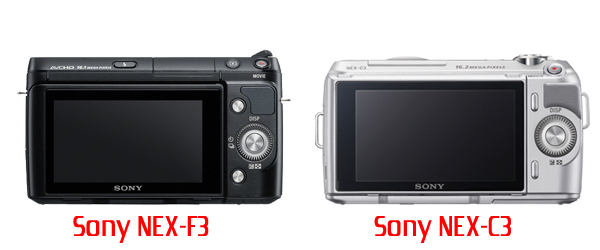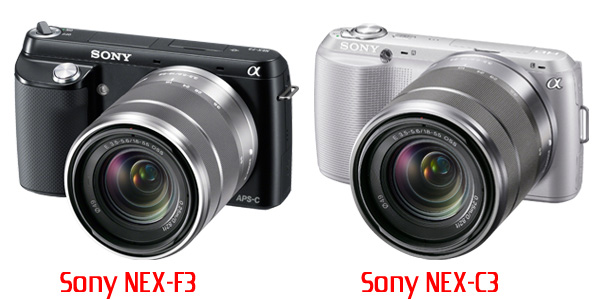Now that Sony has officially announced the NEX-F3, we can take a closer look at what the latest e-mount camera has to offer and analyze how it differs from its predecessor, the NEX-C3. While maintaining the same $599 price for body and 18-55mm lens, the new entry NEX model has quite a bit to offer. A new 16.1-megapixel APS-C sensor in place, offering a 16,000 ISO versus the NEX-C3 which maxed out at 12,800 ISO. The NEX-F3 is also capable of filming at 1920 x 1080 videos at 60fps interlaced or 24fps progressive where once again, the NEX-C3 fell short to just 720p. Plenty more differences for you listed after the jump.

With a new hot-shoe in place, the NEX-F3 can also take advantages of NEX accessories, designed for the NEX-5 and NEX-F5, like Sony’s OLED external viewfinder attachment. Those not wanting to deal with external battery chargers will also be happy about a new 1.5-amp USB charger though it should be noted that you can still purchase a wall charger separately. The one caveat, albeit a small one, is that the NEX-F3 cannot shoot while it’s plugged in. The NEX-F3 can also shoot 470 pictures per charge, versus 400 offered by the NEX-C3.
Of course, with the new 180 degree tilt LCD, the NEX-F3 makes shooting yourself way easier but those looking to shoot overhead will find it a bit more difficult as the camera’s screen does not tilt downward as much at the NEX-C3. Besides that, an all new grip awaits users, a cross between the Sony NEX-5N and NEX-7, making it easier to maintain a solid hold. While the main UI software has seen no change, Sony has introduced some new shooting modes like Portrait Framing which:
automatically crops your photos to make the resulting composition obey the rule of thirds, and boosts it back to full resolution using Sony’s By Pixel Super Resolution technology. The tech works by analyzing the picture’s pixels to find and match patterns using Sony’s vast, proprietary database (which is loaded on the camera) to fill in the blanks.
We’ll have more for you as we come across it but for those looking to get into a new entry camera, the NEX-F3 seems like a hard unit to pass up.
Discuss:
Which features of the NEX-F3 stand out to the most to you?


You must be logged in to post a comment.